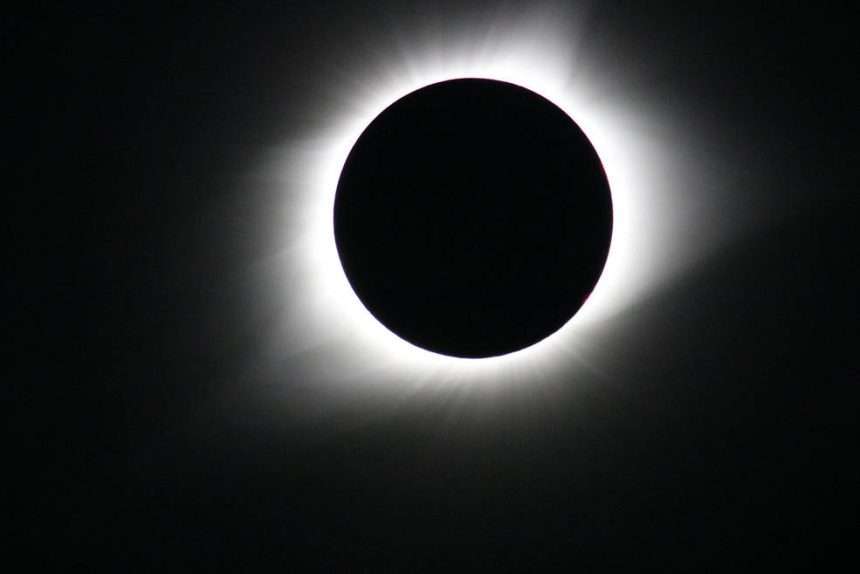WHAT IS A SOLAR ECLIPSE?
A solar eclipse occurs when the Moon moves in between Sun and the Earth. The Moon can completely or partially obscure the Sun’s view from the Earth.
Solar eclipses fall into three varieties: total, partial, and annular.
Total or full eclipse:
This occurs when the moon completely blocks the Sun, blocking all of its bright light.
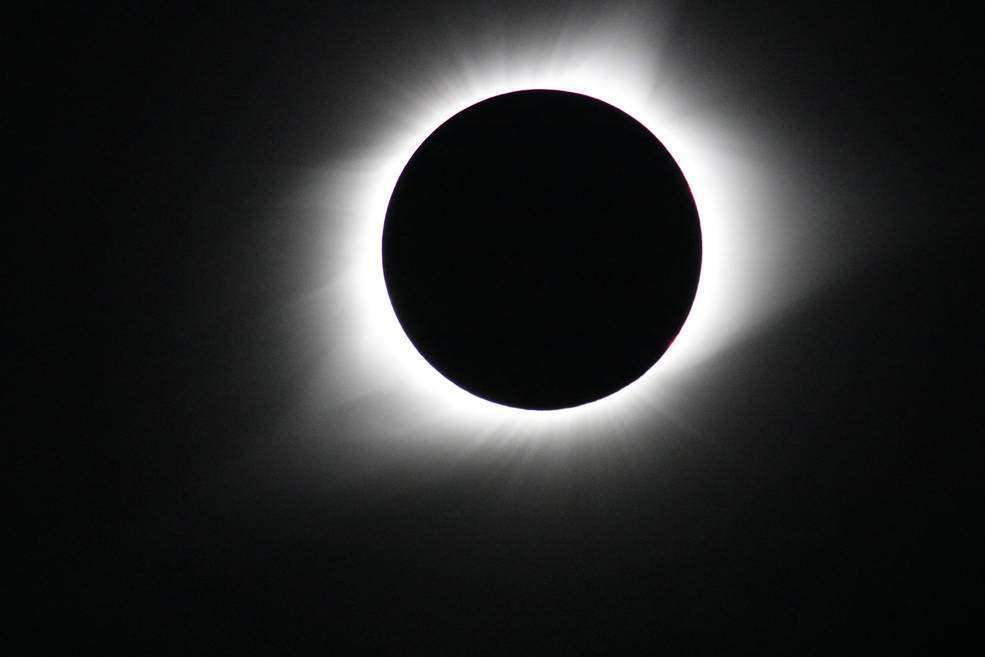
partial solar eclipse:
You probably won’t notice any difference in light intensity during a partial solar eclipse as the Moon only slightly blocks the Sun.
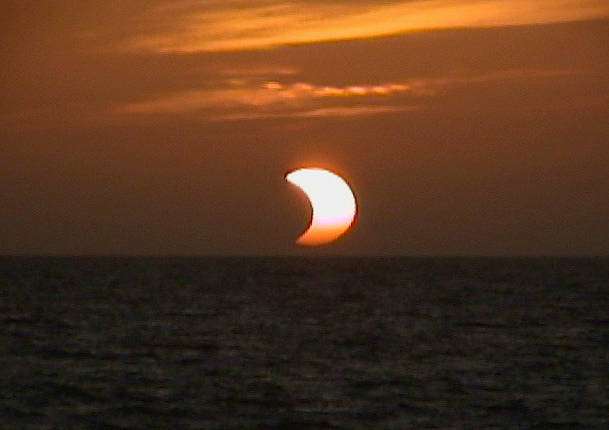
Annular eclipse:
This can be seen when the Moon is traveling farthest in its elliptical orbit from Earth. Because of this, a visible annulus, sometimes known as a ring of light or “ring of fire,” may be seen around the Moon.
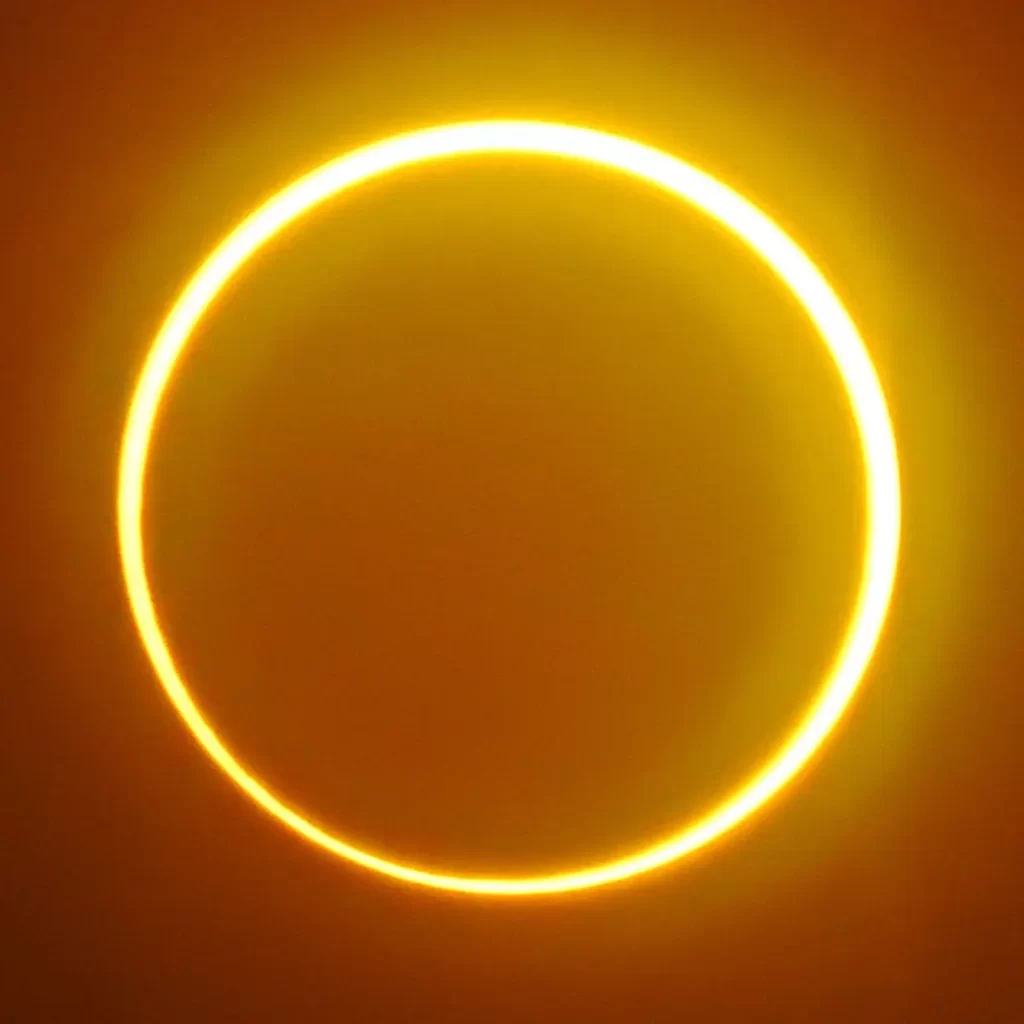
SHOULD YOU VIEW THE ECLIPSE OR NOT?
A solar eclipse is a remarkable phenomenon, and anyone who has seen one will attest to how majestic it is. If you have the chance to see an eclipse, you should, but always remember to protect your eyes while viewing.
HOW TO TAKE CARE OF EYES WHILE VIEWING THE SOLAR ECLIPSE?
Avoid looking directly at the Sun. If you plan to observe the solar eclipse, make sure you wear safety-approved, protective viewing glasses..
Even if the sun is partially hidden, it is never safe to look directly at its beams.
If you want to face the sun to view a partial eclipse, you must always wear eclipse glasses, or utilise an indirect approach.
It is safe to look straight at the eclipse while the moon totally blocks the sun for the brief period (1-2 minutes) known as the “period of totality,” but it’s important to put back on your glasses right before the sun starts to show.
STAGES OF THE TOTAL ECLIPSE
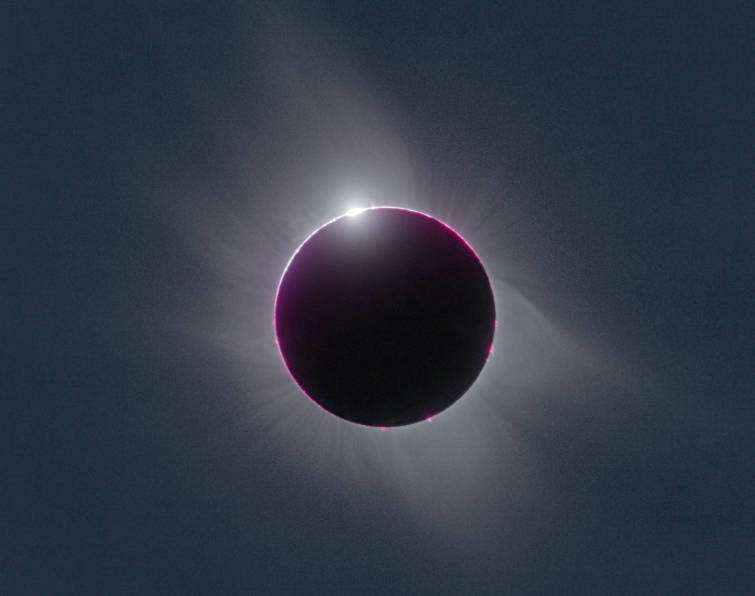
1. Diamond ring: When the moon starts covering the sun there comes a point when there is one brilliant point that shines within the sun’s atmosphere at the moon’s edges. This looks like a massive diamond ring.
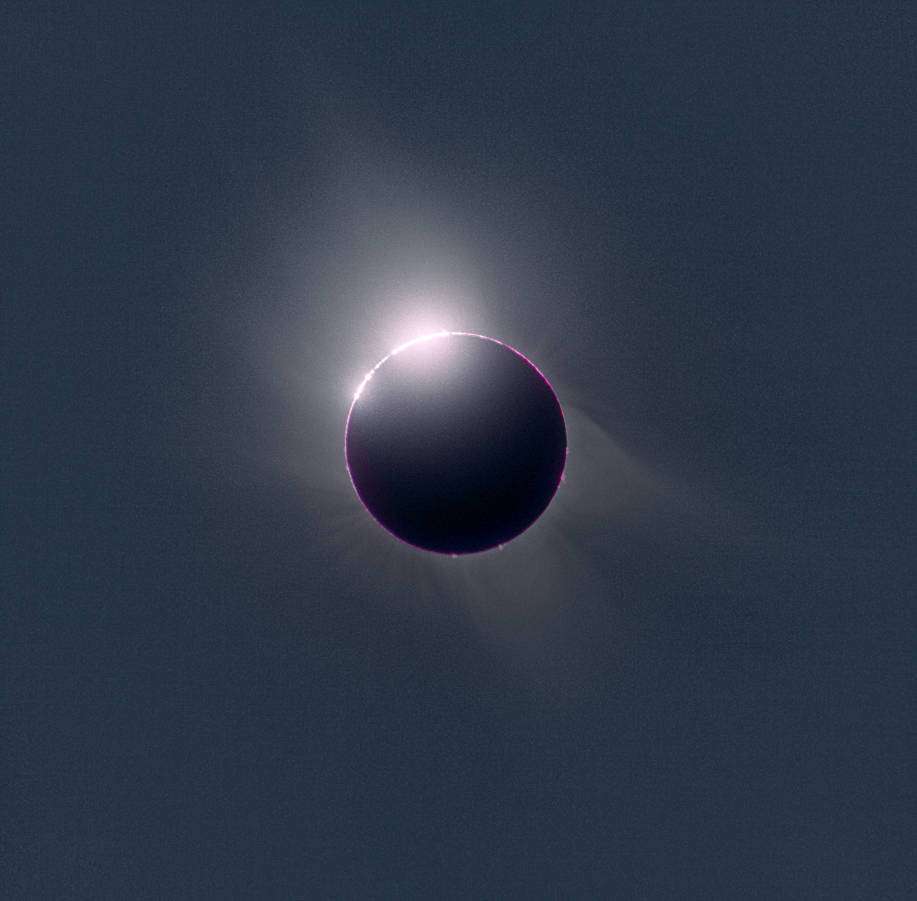
2. Bailey’s beads: As the moon continues to cover the sun, this bright spot of light or the diamond of brilliant radiance, may fragment into multiple points of light that shine around the moon’s edges. These are the sun’s rays of light passing through and are known as Baily’s Beads.
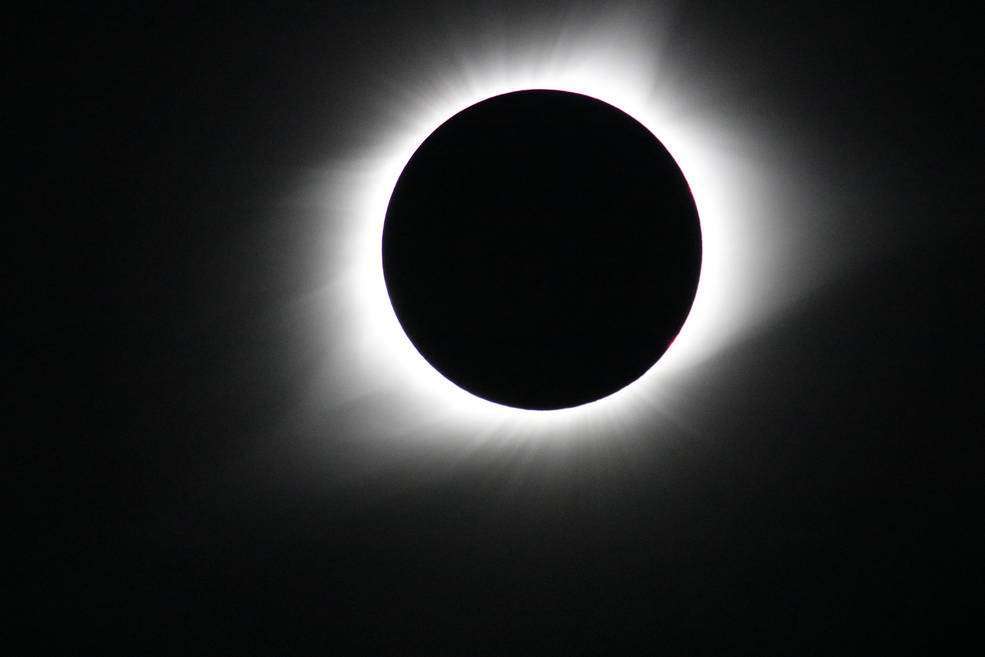
3. Period of totality: Once Baily’s Beads have vanished and there is no longer any sunlight streaming directly at you, you can safely view the total eclipse without the glasses. However, you must remain watchful to make sure you shield your eyes once more before the totality ends. In some places, the total eclipse could last just a minute or two.
4. You will start to notice lighting on the side opposite where the diamond ring first sparkled as the moon continues to move across the sun. Before the first flash of sunlight comes around the moon’s borders, ensure you are observing the eclipse safely by putting your safety glasses back on.
5. End of the eclipse: Once your eyes are yet again protected, you can continue to observe the eclipse’s concluding phases, which mimic those of the beginning: you will once more witness Baily’s Beads, followed by a diamond ring until the entire sun is once more visible.
WHY VIEWING SOLAR ECLIPSE IS HARMFUL TO NAKED EYES?
Normally when light enters the eye, visual perception begins. The retina at the rear of the eye contains light-sensitive cells that are activated by this light. The signals from these cells pass on the information to the optic nerve which takes them to the brain. The brain then interprets this visual data and thats how we see.
The central opening at the front of the eye where light enters is known as the pupil. Pupils of humans are circular. The muscle that regulates pupil size is the iris, the colored region that surrounds the pupil. Its main function is to regulate the amount of light that enters the eye.
In dim light, the iris dilator muscles are stimulated, pulling the pupil outward and causing them to broaden or dilate to let in more light. As the intensity of light increases, the sphincter muscle of the iris is activated which causes the pupils to constrict in order to protect the retina, which is sensitive to light.

Now, gazing directly at the sun is never a good idea, but when we are viewing the eclipse, it is considerably riskier.
Sunglasses are advised to shield your eyes from the sun’s brightness when the sun is still visible behind the moon.
WHY IS VIEWING SOLAR ECLIPSE MORE DANGEROUS THAN VIEWING SUN DIRECTLY?
During the totality, when the sun’s rays are completely blocked, the pupils widen to let in more light. If you choose to take off your glasses to view the entire eclipse and then forget to put them back on when the sun begins to shine again, your dilated pupil will let in more light, endangering your retina and possibly even causing blindness.
WHAT HAPPENS IF YOU LOOK AT THE ECLIPSE WITH NAKED EYES?
A visual condition known as solar (or photic) retinopathy refers to injury to the retina caused by photochemical toxicity and thermal injury that is sustained during or following a prolonged or intense exposure of the sun’s radiation .
A common symptom is mild-to-moderate visual acuity deficit and/or central or paracentral scotomas associated with sungazing or eclipse viewing.
Patients may experience an acute worsening of their visual acuity that lasts for a few weeks or months, but this deterioration usually goes away on its own.
The prognosis in most cases is good with visual loss being reversible and usually, after a triggering event, a patient may recover spontaneously within 3-6 months while some may take upto 1 year.
BEST WAY TO VIEW THE ECLIPSE
According to NASA, only when eye protection-specific filters are applied can the Sun be seen directly.
A thin layer of aluminum or chromium alloy is typically put on the surface of these filters, dampening both visible and near-infrared radiation.
The manufacturers and authorised dealers of eclipse glasses and handheld solar viewers must verify to be in compliance with the ISO 12312-2 international safety standards.
A suitable solar filter should transmit no more than 0.5% (density 2.3) of near-infrared radiation and less than 0.003% (density 4.5)of visible light (380 to 780 nm) (780 to 1400 nm)
Welder’s glass in shade number 14 is one of the most widely accessible filters for secure solar viewing and is available from welding supply stores. Aluminized mylar made expressly for sun observation is a popular, affordable alternative.
HOW NOT TO VIEW THE SOLAR ECLIPSE:
NASA has provided with lost of unsafe filters. These are:
- All color film
- Black-and-white film devoid of silver
- photographic negatives with images (such as x-rays and snapshots)
- Smoked glass
- Sunglasses
- Photographic neutral density filters, and
- Polarising filters
WHY ARE THESE FILTERS UNSAFE?
Although they may block most of the visible light, the majority of these filters allow a lot of invisible infrared and UV radiation, which can damage the retina by photooxidative and thermal injury.
Low cost telescope have solar filters on their eyepieces. When the telescope is oriented at the Sun, these glass filters may abruptly fracture due to warming, and retinal injury may occur rapidly.
Never use an unfiltered camera, telescope, pair of binoculars, or other optical gear to observe the sun while it is fully or partially eclipsed.
In the same way, avoid looking at the sun through a camera, telescope, binoculars, or any other optical equipment while wearing your eclipse glasses or a handheld solar viewer since the concentrated solar radiation can harm the filter and cause sudden thermal damage to the retina.
QUICK SUMMARY:
Solar eclipse is a stunning and amazing phenomenon which should be enjoyed with great caution.
Despite it’s beauty, solar radiation from viewing the eclipse is extremely dangerous and can impair vision.
To view the eclipse, you must use a solar eclipse viewer made by an authorized manufacturer or dealer.

